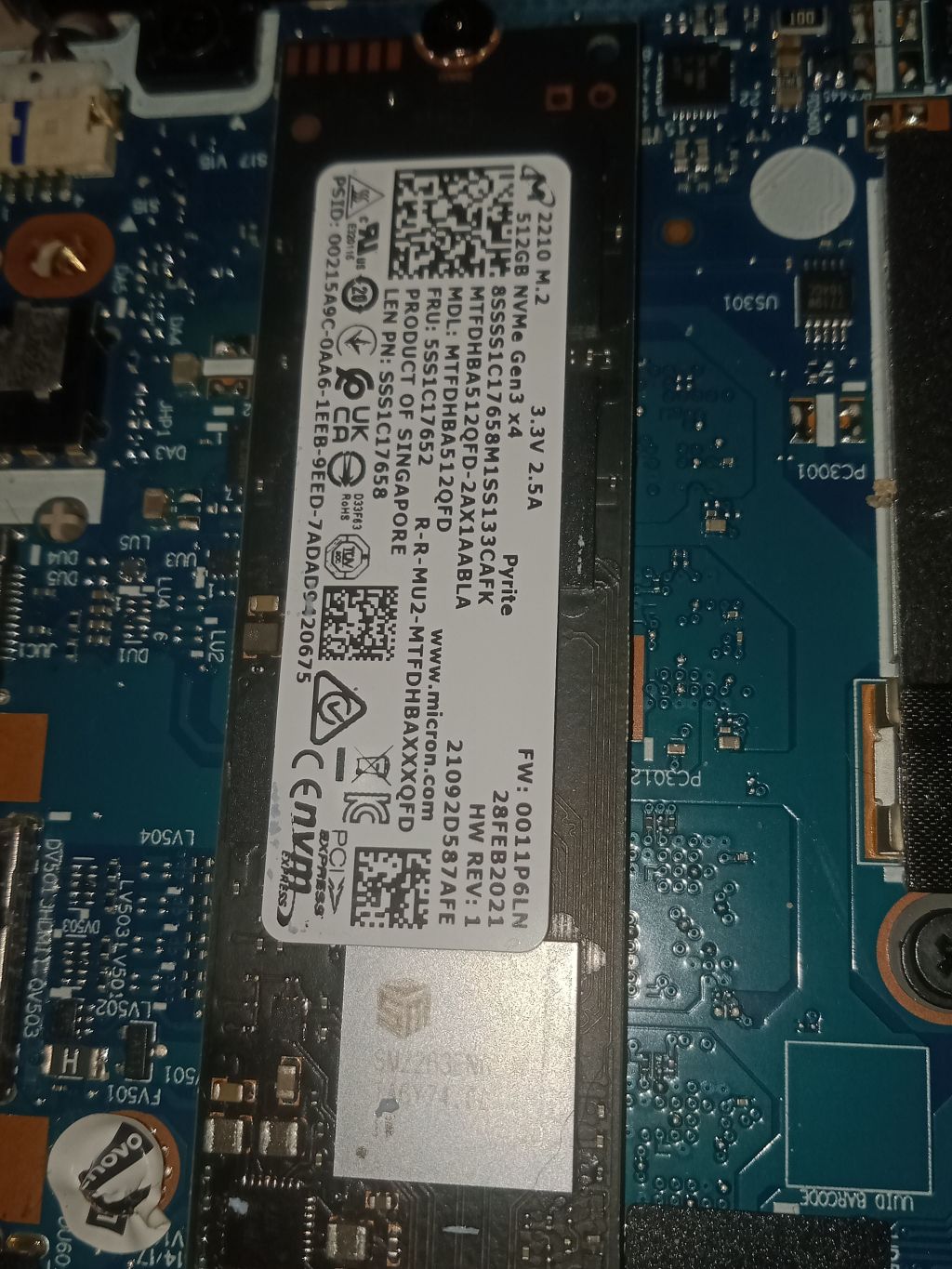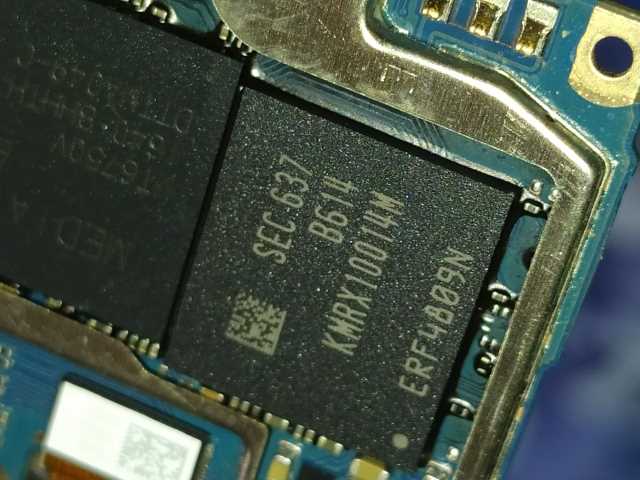Comparing: Micron 2210 MTFDHBA512QFD vs Samsung KMRX10014M
In this comparison, we analyze two Disks: Micron 2210 MTFDHBA512QFD and Samsung KMRX10014M, using synthetic benchmark tests to evaluate their overall performance. This side-by-side comparison helps users understand which hardware delivers better value, speed, and efficiency based on standardized testing. Whether you're building a new system or upgrading an existing one, this benchmark-driven evaluation offers valuable insights to guide your decision.

Micron 2210 MTFDHBA512QFD
| Type: | Disks |
|---|---|
| Model: | Micron MTFDHBA512QFD |
| Capacity: | 512GB |
| Interface: | PCIe 3.0 x4 |

Samsung KMRX10014M
| Type: | Disks |
|---|---|
| Model: | Samsung KMRX10014M |
| Capacity: | 32GB |
| Interface: | eMMC |
Specification Comparison Table
This specification comparison presents technical details of several devices or components to help you understand the key differences between each option. Use this table as a reference to determine which device best suits your needs.
| Specification | Micron 2210 MTFDHBA512QFD | Samsung KMRX10014M |
|---|---|---|
| Brand | Micron | Samsung |
| Format | SSD M.2 NVMe 2280 | eMMC 5.1 |
| Capacity | 512GB | 32GB |
| Interface | PCIe 3.0 x4 | eMMC |
Submission Comparison Table
This submission comparison table displays the number and details of benchmark data submissions from various devices or components. This information helps you understand the performance based on the benchmarks that have been tested, as well as providing an overview of the consistency and popularity of the available benchmark results.
Submission Comparison Chart
This chart visualizes the benchmark scores comparison between two hardware devices based on submitted data.
Media Gallery
A collection of photos of tested hardware. These images can help you identify the physical form, model, and variant of the hardware in question. These photos are from our own documentation, and if they are not available we may not be able to document them.
About Hardware Micron 2210 MTFDHBA512QFD
The Micron 2210 MTFDHBA512QFD is a 512GB capacity NVMe SSD that uses the PCIe Gen 3.0 x4 interface and utilizes QLC NAND flash, designed to provide the ideal combination of large capacity and affordability compared to TLC-based SSDs. One of the key components of this SSD's performance is the use of the Silicon Motion SM2263ENG controller, which is known for efficiently managing the high performance and low power consumption of QLC-based NVMe SSDs.
With this controller, the Micron 2210 is able to maximize the potential of QLC NAND while maintaining operational stability and efficiency. In tests using CrystalDiskMark, the SSD recorded speeds of up to 2242.12 MB/s read and 1148.16 MB/s write, while in AS-SSD Benchmark, the results were 1891.69 MB/s read and 629.64 MB/s write. This performance is perfectly sufficient for multitasking, fast system booting, and large file processing.
Testing was conducted on a Lenovo IdeaPad Slim 3i 14ITL6 device, with a 12GB DDR4 3200MHz Dual Channel (8+4) RAM configuration and running Windows 10 and Windows 11 22H2 operating systems. These test platforms are representative of modern systems that are compatible with the high performance these SSDs offer.
With its M.2 2280 form factor and support for technologies such as TRIM, S.M.A.R.T. and LDPC ECC, the Micron 2210 512GB is suitable for laptop and desktop users who want fast and efficient storage with sufficient endurance for daily workloads and light-medium productivity.
Device Test:
Device: Lenovo IdeaPad Slim 3i 14ITL6
RAM: 12GB DDR4 3200MHz Dual Channel (8+4)
OS: Windows 10, Windows 11 22H2
Friday, 06 August 2021 04:34:19 | Update: 1 month ago
About Hardware Samsung KMRX10014M
OPPO F1s eMMC 5.1 (Samsung KMRX10014M) is an internal storage chip made by Samsung that is used in the OPPO F1s smartphone. Relying on eMMC 5.1 technology, this chip offers increased data transfer speeds compared to the previous generation (eMMC 5.0), providing a smoother user experience, especially when it comes to opening apps, saving files, and running the Android operating system responsively.
Although not comparable to UFS (Universal Flash Storage) in terms of performance, eMMC 5.1 remains an economical storage solution for mid-range devices like the OPPO F1s. The technology is reliable enough to handle everyday activities such as opening social media, recording videos, taking photos, and storing documents and apps.
The test was conducted on an OPPO F1s device with MediaTek MT6750 specifications, 4GB of RAM, and 32GB of internal storage, running on the Android 6 operating system. The internal storage on the OPPO F1s uses the Samsung KMRX10014M chip, which is an early generation eMMC 5.1 with relatively high performance for the standards of its release time.
Interestingly, despite the device being over 7 years old, testing using the Cross Platform Disk Test (Mobile) showed read speeds of 286.5 MB/s and write speeds of 78.7 MB/s. These figures are impressive for an eMMC chip that has gone through a long usage cycle, and indicate that the Samsung KMRX10014M has good NAND Flash endurance.
Overall, the eMMC 5.1 on the OPPO F1s offers an ideal combination of power efficiency, moderately high performance, and low manufacturing costs. This makes it a very suitable solution for devices with standard to mid-range requirements, especially when first released. While eMMC performance may degrade with age, these benchmark results show that the chip is still capable of performing quite well even after many years.
Device test (testbed):
Device: OPPO F1s
CPU: MediaTek MT6750
RAM: 4GB
Storage: 32GB
OS: Android 6
* This test was conducted after the device was approximately 7 years old, which is likely to have degraded the performance of eMMC.
Friday, 19 November 2021 16:41:45 | Update: 1 month ago


